Grow Watermelons at Home? Absolutely! Imagine biting into a juicy, sweet watermelon you nurtured from seed to fruit, right in your own backyard. Forget those bland, store-bought melons – we’re talking about homegrown flavor that bursts with sunshine and satisfaction. For centuries, watermelons have been a symbol of summer, abundance, and community gatherings, tracing back to their origins in Africa. Ancient Egyptians even depicted watermelons in their art, showcasing their importance as a food source and cultural icon.
But let’s be honest, the thought of cultivating these sprawling fruits can seem daunting. Many gardeners shy away, believing they need acres of land or a professional’s touch. That’s where these DIY tricks and hacks come in! I’m here to show you that growing watermelons at home is not only possible, but also incredibly rewarding, even if you have limited space.
This article is packed with simple, effective techniques to help you overcome common challenges, from choosing the right varieties for your climate to maximizing your yield with clever space-saving methods. So, ditch the grocery store melon and get ready to experience the unparalleled joy of harvesting your very own, perfectly ripe watermelon. Let’s get growing!
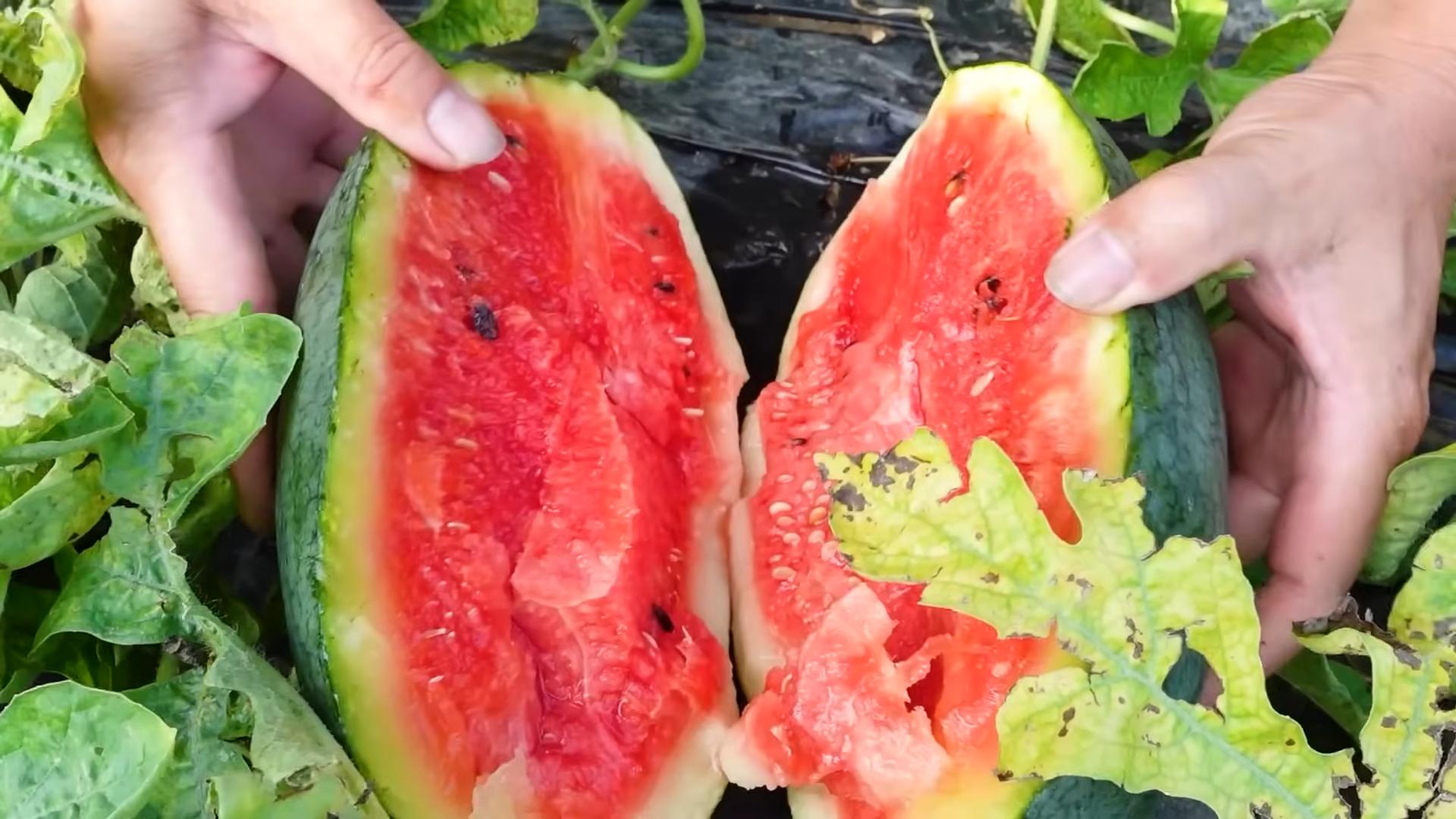
Growing Watermelons: A Beginner’s Guide to Sweet Success!
Okay, let’s talk watermelons! Who doesn’t love a juicy, refreshing slice of watermelon on a hot summer day? And the best part? You don’t need a huge farm to grow your own. I’m going to walk you through everything you need to know to cultivate these delicious fruits right in your backyard (or even in containers!).
Choosing Your Watermelon Variety
First things first, you need to pick the right watermelon variety for your space and climate. Some varieties are smaller and perfect for containers, while others need a lot of room to sprawl. Here are a few popular choices:
* Sugar Baby: A classic, small, and early-maturing variety. Great for smaller gardens.
* Crimson Sweet: A larger, oblong watermelon with a sweet, red flesh. A popular choice for its flavor and size.
* Bush Sugar Baby: A compact bush variety, ideal for containers and small spaces.
* Yellow Doll: A unique variety with yellow flesh that’s incredibly sweet.
* Icebox Watermelons: These are smaller varieties, typically weighing between 5-10 pounds, making them perfect for smaller families or limited storage space.
Consider your climate and growing season length when making your choice. Some varieties need a longer growing season than others. Check the seed packet or online descriptions for specific information.
Preparing Your Watermelon Patch
Watermelons are heavy feeders and need plenty of sunshine. Here’s how to get your garden ready:
* Sunlight: Watermelons need at least 6-8 hours of direct sunlight per day. Choose a location that gets plenty of sun.
* Soil: Watermelons thrive in well-drained, sandy loam soil. If your soil is heavy clay, amend it with compost, aged manure, or peat moss to improve drainage and fertility.
* Soil pH: Watermelons prefer a slightly acidic soil pH between 6.0 and 6.8. You can test your soil pH with a home testing kit or send a sample to your local agricultural extension office.
* Space: Watermelons need plenty of space to sprawl. Most vining varieties need at least 6-8 feet between plants. Bush varieties can be planted closer together, but still need adequate space for air circulation.
* Fertilizer: Watermelons are heavy feeders, so it’s important to amend your soil with plenty of organic matter. You can also add a balanced fertilizer (like 10-10-10) to the soil before planting.
Starting Your Watermelon Seeds
You can either direct sow your watermelon seeds in the garden or start them indoors. Starting them indoors gives them a head start, especially in areas with shorter growing seasons.
* Direct Sowing: Wait until the soil has warmed to at least 70°F (21°C) before direct sowing your watermelon seeds. Plant the seeds about 1 inch deep and 2-3 feet apart.
* Starting Indoors: Start your watermelon seeds indoors about 3-4 weeks before the last expected frost. Use peat pots or biodegradable pots to avoid disturbing the roots when transplanting. Plant the seeds about 1 inch deep in a seed-starting mix. Keep the soil moist and warm (around 80-85°F or 27-29°C). Once the seedlings have developed a few true leaves, you can harden them off by gradually exposing them to outdoor conditions before transplanting.
Transplanting Your Watermelon Seedlings
Once the danger of frost has passed and the soil has warmed up, it’s time to transplant your watermelon seedlings into the garden.
* Hardening Off: Before transplanting, harden off your seedlings by gradually exposing them to outdoor conditions for a week or two. Start by placing them in a sheltered location for a few hours each day, gradually increasing the amount of time they spend outdoors.
* Transplanting: Dig a hole that is slightly larger than the root ball of the seedling. Gently remove the seedling from the pot and place it in the hole. Backfill with soil and water thoroughly. Space the plants according to the variety’s recommendations.
* Mulching: Mulch around the plants with straw, hay, or black plastic to help retain moisture, suppress weeds, and warm the soil.
Caring for Your Watermelon Plants
Watermelons need consistent care to thrive. Here’s what you need to do:
* Watering: Watermelons need plenty of water, especially during hot, dry weather. Water deeply and regularly, especially when the fruits are developing. Avoid overhead watering, which can lead to fungal diseases. Soaker hoses or drip irrigation are ideal.
* Fertilizing: Fertilize your watermelon plants every 2-3 weeks with a balanced fertilizer or a fertilizer specifically formulated for melons. Follow the instructions on the fertilizer package.
* Weeding: Keep the area around your watermelon plants free of weeds. Weeds compete with the plants for water and nutrients.
* Pruning: Pruning watermelons is optional, but it can help improve air circulation and fruit production. You can prune off any suckers (small shoots that grow from the base of the plant) or any dead or diseased leaves.
* Pollination: Watermelons need to be pollinated to produce fruit. Bees are the primary pollinators. If you don’t have enough bees in your garden, you can hand-pollinate the flowers. To hand-pollinate, use a small paintbrush to transfer pollen from the male flowers to the female flowers. Female flowers have a small fruit at the base of the flower, while male flowers do not.
Dealing with Pests and Diseases
Watermelons can be susceptible to a variety of pests and diseases. Here are some common problems and how to deal with them:
* Cucumber Beetles: These small beetles can damage leaves and transmit diseases. Control them with insecticides or by covering the plants with row covers.
* Squash Bugs: These pests suck the sap from the leaves and can kill young plants. Control them by handpicking them off the plants or by using insecticides.
* Aphids: These small, sap-sucking insects can weaken plants. Control them with insecticidal soap or by releasing beneficial insects like ladybugs.
* Powdery Mildew: This fungal disease causes a white, powdery coating on the leaves. Control it with fungicides or by improving air circulation.
* Fusarium Wilt: This fungal disease causes the plants to wilt and die. Choose disease-resistant varieties and practice crop rotation to prevent this disease.
* Anthracnose: This fungal disease causes dark, sunken lesions on the leaves and fruits. Control it with fungicides and by removing infected plant parts.
Harvesting Your Watermelons
Knowing when to harvest your watermelons is crucial for getting that perfect, sweet flavor. Here are a few signs to look for:
* The tendril closest to the fruit turns brown and dries up. This is a reliable indicator that the watermelon is ripe.
* The bottom of the watermelon (the part that rests on the ground) turns from white to a creamy yellow. This is often called the “ground spot.”
* The watermelon sounds hollow when you thump it. This takes some practice, but a ripe watermelon will have a deep, resonant sound.
* The rind becomes dull and less shiny.
Once you’ve determined that your watermelon is ripe, use a sharp knife to cut it from the vine, leaving a few inches of stem attached.
Step-by-Step Instructions: From Seed to Slice
Okay, let’s break down the whole process into easy-to-follow steps:
1. Choose Your Variety: Decide which watermelon variety is best suited for your space and climate. Consider size, growing season length, and disease resistance.
2. Prepare Your Soil: Select a sunny location with well-drained soil. Amend the soil with compost, aged manure, or peat moss to improve fertility and drainage. Aim for a soil pH between 6.0 and 6.8.
3. Start Your Seeds (Optional): If you have a short growing season, start your seeds indoors 3-4 weeks before the last expected frost. Use peat pots or biodegradable pots to avoid disturbing the roots.
4. Harden Off Seedlings (If Starting Indoors): Gradually expose your seedlings to outdoor conditions for a week or two before transplanting.
5. Transplant Seedlings: Once the danger of frost has passed and the soil has warmed up, transplant your seedlings into the garden. Space the plants according to the variety’s recommendations.
6. Water Regularly: Water deeply and regularly, especially during hot, dry weather. Avoid overhead watering.
7. Fertilize: Fertilize your watermelon plants every 2-3 weeks with a balanced fertilizer or a fertilizer specifically formulated for melons.
8. Weed Regularly: Keep the area around your watermelon plants free of weeds.
9.
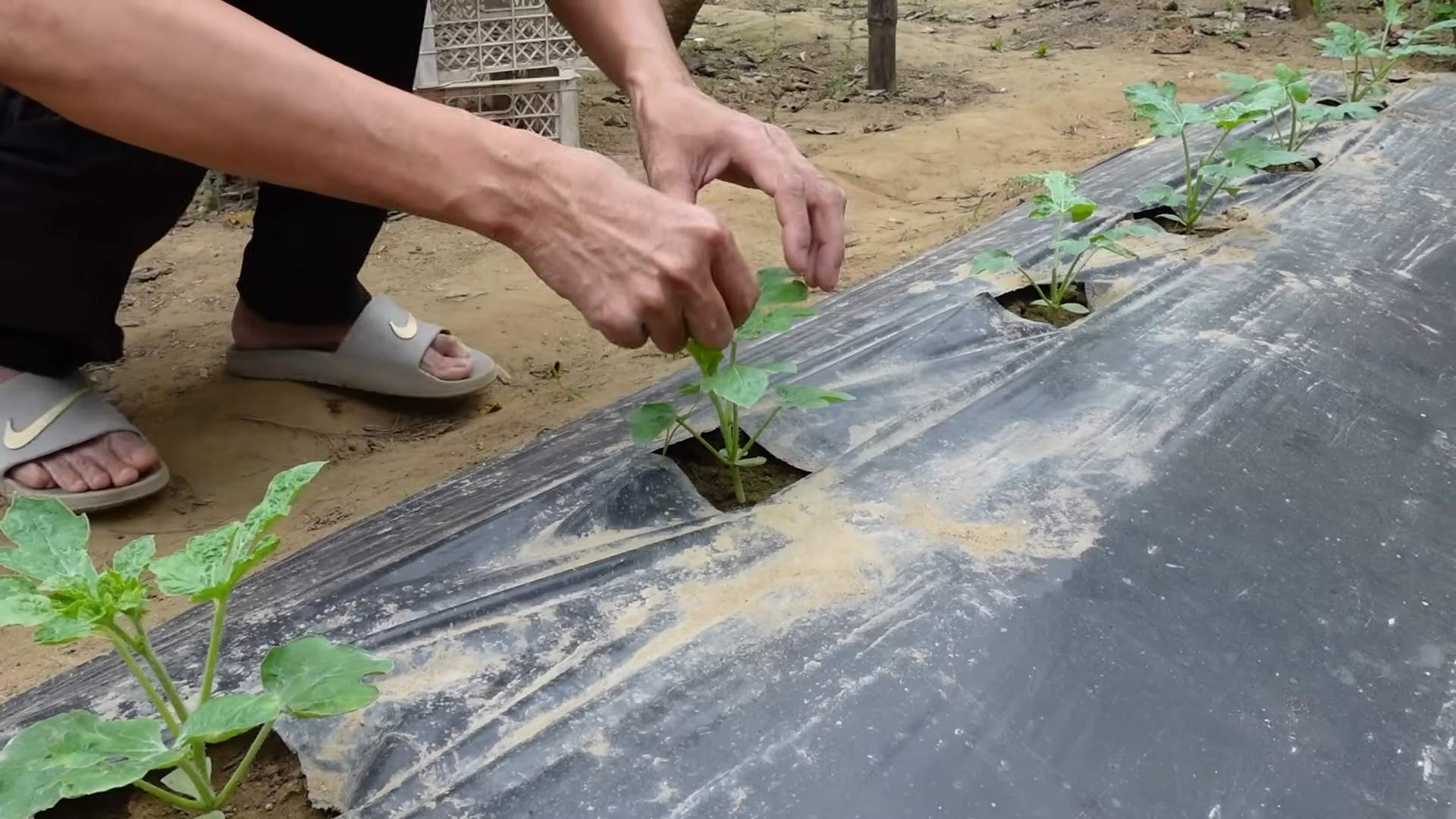
Conclusion
So, there you have it! Growing watermelons at home, while it might seem daunting at first, is entirely achievable and incredibly rewarding. We’ve walked you through the essential steps, from selecting the right variety for your climate to nurturing those precious seedlings and finally, harvesting your own juicy, homegrown watermelons.
Why is this DIY trick a must-try? Because nothing compares to the taste of a watermelon you’ve nurtured from seed to fruit. The sweetness is intensified, the texture is perfect, and the satisfaction of knowing you created something so delicious is unparalleled. Plus, you’ll avoid the pesticides and long-distance transportation often associated with store-bought watermelons. You’ll be enjoying a truly fresh, local, and organic treat.
But the benefits extend beyond just the taste. Growing your own watermelons is a fantastic way to connect with nature, learn about the growing process, and even get some exercise. It’s a project the whole family can enjoy, from planting the seeds to celebrating the harvest. And let’s not forget the bragging rights! Imagine serving slices of your own homegrown watermelon at your next barbecue – your guests will be amazed.
Looking for variations? Absolutely! Experiment with different watermelon varieties. Try growing seedless watermelons for convenience, or opt for heirloom varieties like ‘Moon and Stars’ for a unique flavor and appearance. You can also explore different growing methods. If you’re short on space, consider growing watermelons vertically on a trellis. This not only saves space but also improves air circulation and reduces the risk of disease. Another fun variation is to try fermenting your watermelon rind into a delicious and probiotic-rich pickle!
Don’t be afraid to get creative and adapt the techniques to suit your specific needs and preferences. The most important thing is to have fun and enjoy the process.
We’re confident that with a little patience and effort, you can successfully grow watermelons at home. It’s a truly rewarding experience that will bring you joy and delicious fruit for years to come. So, grab your seeds, prepare your soil, and get ready to embark on this exciting gardening adventure!
We encourage you to try this DIY trick and share your experience with us! Let us know what varieties you grew, what challenges you faced, and what tips you learned along the way. Share your photos and stories on social media using #HomegrownWatermelons. We can’t wait to see your amazing results! Remember, the key to success is to start small, be patient, and learn from your mistakes. Happy growing!
Frequently Asked Questions (FAQ)
What is the best time to start growing watermelons?
The ideal time to start growing watermelons depends on your climate. In general, watermelons need a long growing season of at least 70-90 days of warm weather. If you live in a warmer climate with a long growing season, you can start seeds directly in the ground after the last frost. However, if you live in a cooler climate with a shorter growing season, it’s best to start seeds indoors 6-8 weeks before the last frost and transplant them outdoors once the weather warms up. Check your local frost dates to determine the best time to start your seeds.
How much space do watermelons need?
Watermelons are sprawling plants that require a significant amount of space. Each plant needs at least 4-6 feet of space in all directions. If you’re growing watermelons in rows, space the rows 8-10 feet apart. If you’re short on space, consider growing watermelons vertically on a trellis. This will not only save space but also improve air circulation and reduce the risk of disease. Make sure the trellis is sturdy enough to support the weight of the watermelons.
What kind of soil do watermelons need?
Watermelons thrive in well-drained, sandy loam soil that is rich in organic matter. The soil should have a pH of 6.0-6.8. Before planting, amend the soil with compost or well-rotted manure to improve drainage and fertility. Watermelons are heavy feeders, so it’s important to provide them with plenty of nutrients. You can also add a slow-release fertilizer to the soil at planting time.
How often should I water watermelons?
Watermelons need consistent watering, especially during hot, dry weather. Water deeply and regularly, aiming for about 1-2 inches of water per week. Avoid overhead watering, as this can promote fungal diseases. Instead, water at the base of the plant. During fruit development, increase the watering frequency to ensure the watermelons get enough moisture. However, be careful not to overwater, as this can lead to root rot.
What are some common pests and diseases that affect watermelons?
Watermelons are susceptible to a variety of pests and diseases, including aphids, squash bugs, vine borers, powdery mildew, and fusarium wilt. To prevent pest and disease problems, choose disease-resistant varieties, practice crop rotation, and keep your garden clean and free of debris. Inspect your plants regularly for signs of pests or diseases and take action promptly. You can use organic pesticides or fungicides to control pests and diseases.
How do I know when a watermelon is ripe?
Knowing when a watermelon is ripe can be tricky, but there are a few telltale signs to look for. First, check the tendril closest to the watermelon stem. When this tendril turns brown and dries up, the watermelon is usually ripe. Second, check the underside of the watermelon where it rests on the ground. This spot, called the ground spot, should turn from white to yellow or cream-colored. Finally, thump the watermelon with your knuckles. A ripe watermelon will sound hollow and deep.
Can I grow watermelons in containers?
Yes, you can grow watermelons in containers, but you’ll need a large container with good drainage. Choose a container that is at least 24 inches in diameter and 24 inches deep. Use a high-quality potting mix and amend it with compost or well-rotted manure. Water container-grown watermelons regularly and fertilize them every 2-3 weeks. You may also need to provide support for the vines as they grow. Dwarf or bush varieties of watermelons are best suited for container growing.
What kind of fertilizer should I use for watermelons?
Watermelons are heavy feeders and benefit from regular fertilization. Use a balanced fertilizer with a ratio of 10-10-10 or 14-14-14. Apply the fertilizer according to the package directions. You can also use organic fertilizers, such as compost tea or fish emulsion. Fertilize watermelons at planting time and then again every 3-4 weeks during the growing season. Avoid over-fertilizing, as this can lead to excessive vine growth and reduced fruit production.
How can I protect my watermelons from animals?
Animals such as squirrels, raccoons, and birds can damage or eat watermelons. To protect your watermelons, you can use netting or fencing to create a barrier around the plants. You can also use scarecrows or other deterrents to scare away animals. Another option is to cover the watermelons with burlap sacks or old blankets.
Can I save seeds from my homegrown watermelons?
Yes, you can save seeds from your homegrown watermelons, but only if you grew open-pollinated varieties. Hybrid watermelons will not produce true-to-type seeds. To save seeds, scoop out the seeds from a ripe watermelon and rinse them thoroughly. Spread the seeds out on a paper towel to dry completely. Once the seeds are dry, store them in an airtight container in a cool, dark place.

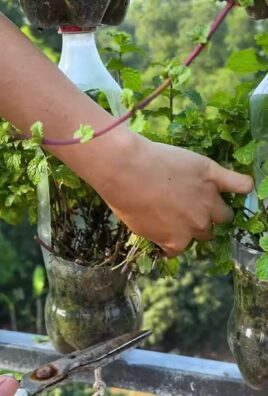
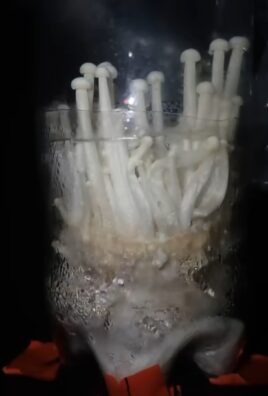
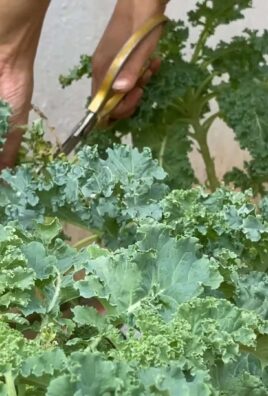
Leave a Comment